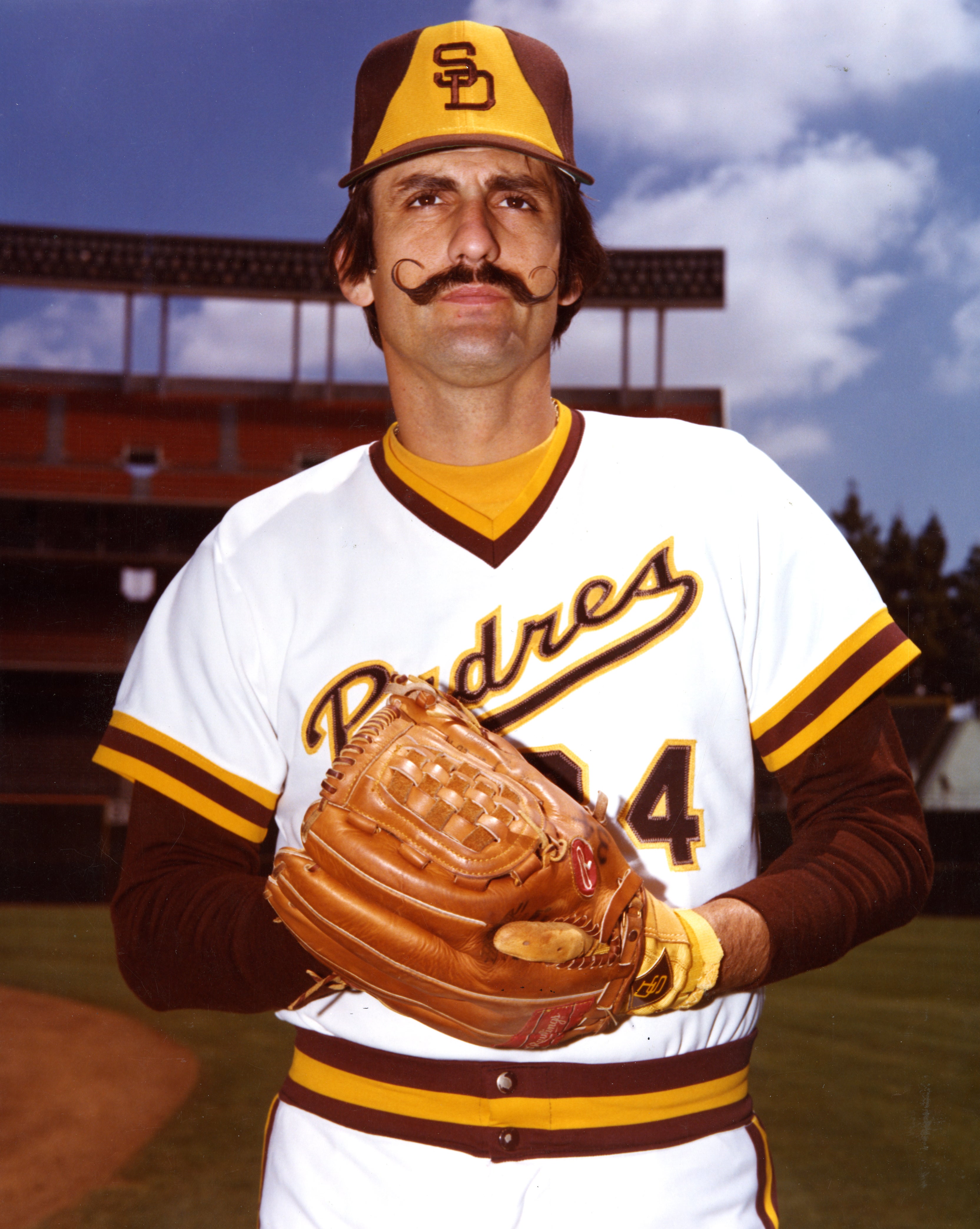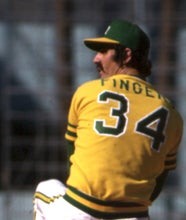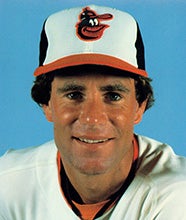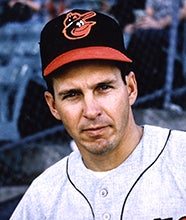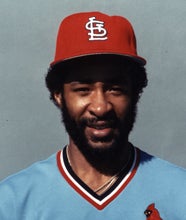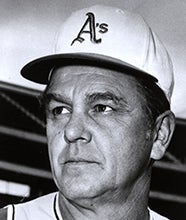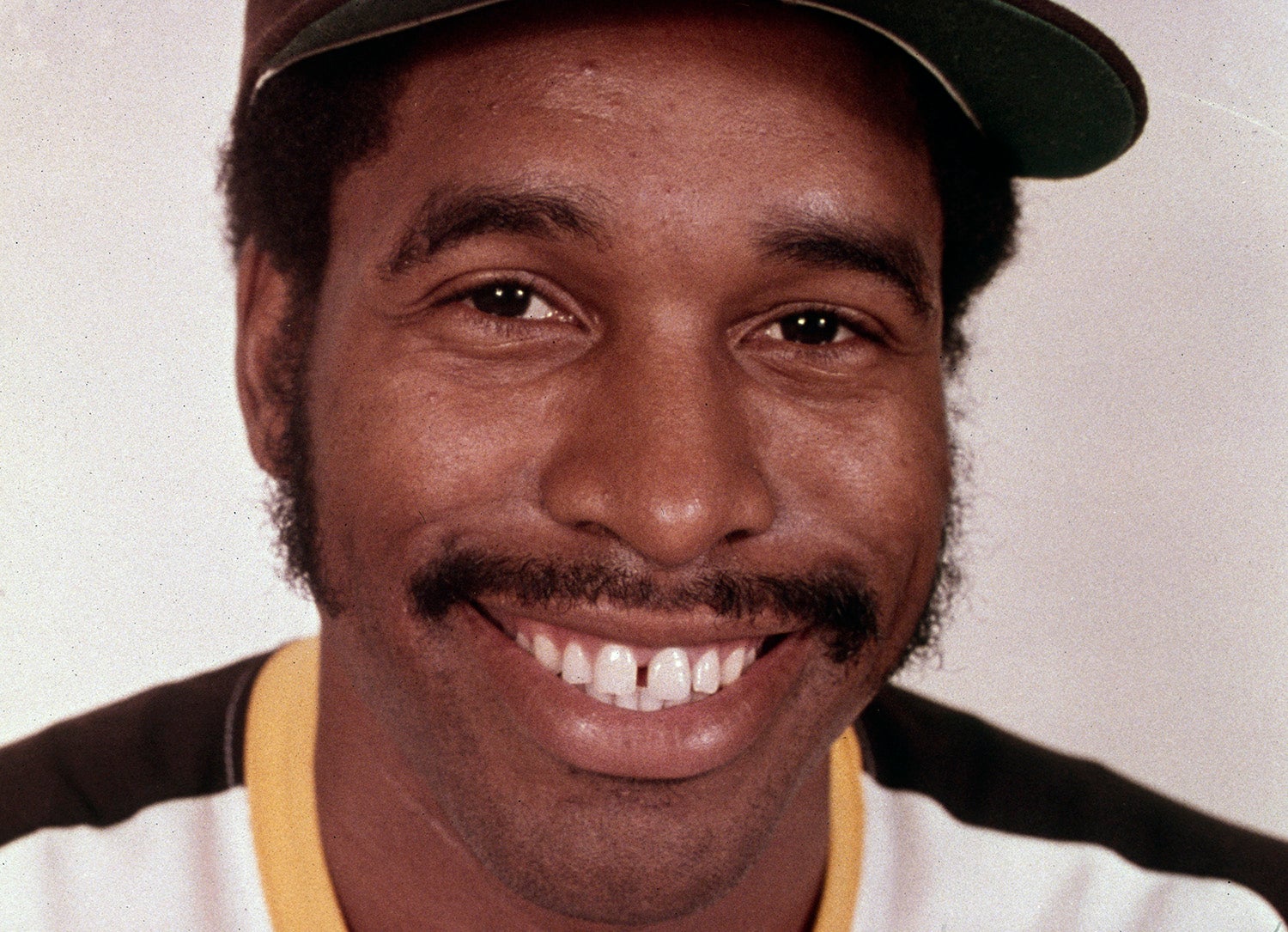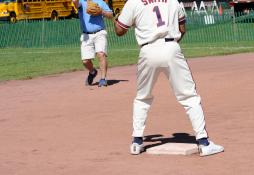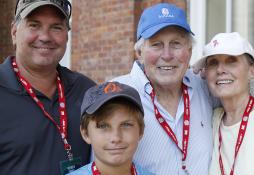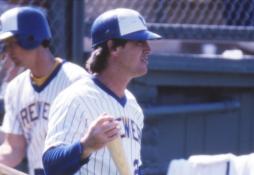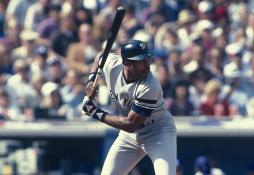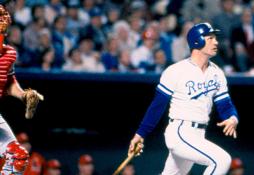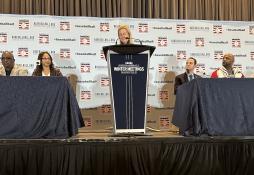- Home
- Our Stories
- #CardCorner: 1980 Topps Kurt Bevacqua
#CardCorner: 1980 Topps Kurt Bevacqua
It was an even-numbered year in the World Series in 1984, which meant the San Diego Padres needed a designated hitter.
Manager Dick Williams, always most comfortable with veteran players in the lineup, turned to a batter who finished his 15-year big league career with fewer than 500 hits and an average of .236.
Hall of Fame Membership
There is no simpler, and more essential, way to demonstrate your support than to sign on as a Museum Member.
Be A Part of Something Greater
There are a few ways our supporters stay involved, from membership and mission support to golf and donor experiences. The greatest moments in baseball history can’t be preserved without your help. Join us today.
Kurt Bevacqua, however, made Williams look like the Hall of Fame manager he was by hitting .412 against the Tigers and taking over – however briefly – the national spotlight. It was a career highlight for a player whose hustle and intensity made him a favorite among teammates and fans alike.
Born Jan. 23, 1947, in Miami Beach, Fla., Bevacqua grew up listening to the Yankees on the radio and fell in love with the game. He later patterned his play after Orioles third baseman Brooks Robinson, serving as a batboy for Baltimore during the team’s stay in Miami during Spring Training in the early 1960s.
He graduated from North Miami High School in 1965 but went unselected in the first MLB Draft that year. Bevacqua enrolled at Miami-Dade Junior College but dropped out after his first semester. After some soul-searching, however, Bevacqua returned to school in January. After starting as an outfielder, Bevacqua moved to second base, where he set a school record with 52 RBI while hitting .311 and earning a spot on the All-NJCAA National Tournament team as he led the Falcons to a second-place finish nationally. The Mets took Bevacqua in the 32nd round of the 1966 MLB Draft but he elected to return to college for the 1967 season.
“He deserves everything that he has achieved,” Miami-Dade coach Demie Mainieri, whom Bevacqua credited with his eventual pro success, told the Miami Herald. “He is an outstanding competitor.”
Bevacqua was selected in the sixth round of the January 1967 MLB Draft by the Braves but again opted to return to school. Then in June of 1967, the Reds took Bevacqua in the 12th round of the draft – and he signed and reported to Class A Tampa of the Florida State League.
Two frustrating years at Tampa followed. But in 1969, the Reds moved Bevacqua to third base and he blossomed, hitting .316 with 16 homers and 91 RBI in 133 games.
“I feel (the Reds) have a little confidence in me now,” Bevacqua told the Miami News during the 1969 season, “and that makes a lot of difference.”
Fighting to keep weight on during the season, Bevacqua burned most of his calories by being a man in perpetual motion. He would carry a nickname – “Dirty Kurt” – throughout his career thanks to a uniform that was almost always soiled due to his hustle and disdain for staying on his feet.
After spending time in the Florida Instructional League following the 1969 campaign, Bevacqua reported to Triple-A Indianapolis in 1970. There, he hit .261 with 15 homers and 71 RBI. But the Reds were flush with young talent, and after returning to Indianapolis to start the 1971 season, Bevacqua was traded to the Indians on May 8, 1971, in exchange for outfielder Buddy Bradford.
After a brief stop at Triple-A Wichita, Bevacqua joined Cleveland in June and played regularly – mainly at second base – during the rest of the season, hitting .204 over 55 games. The Indians felt Bevacqua needed more seasoning and sent him to Triple-A Portland in 1972 – a move that did not please Bevacqua.
“As far as I was concerned, it was a jolt,” Bevacqua told the Miami Herald of his demotion to Triple-A. “I figured I was one of the best hitters in their organization. But (Jack) Brohamer stayed with the Indians because the manager (Ken Aspromonte) brought him up with him from the minors. I hit .375 the first six weeks with Portland and still wasn’t called up, and it affected the way I played.”
Bevacqua hit .313 with nine homers and 72 RBI for Portland, earning a September call up. But after hitting .114 in 19 games, Bevacqua no longer figured in Cleveland’s future plans. The Indians traded him to Kansas City on Nov. 2, 1972, in exchange for pitcher Mike Hedlund.
Thus began Bevacqua’s stretch as a baseball nomad. From 1973-81, he would play for six big league teams – including two separate stints apiece with the Royals and Pirates – while sometimes returning to the minor leagues. He developed a reputation as a jack of all trades and a player whose intensity sometimes brought unwanted attention.
In 1973, Bevacqua shared third base duties for the Royals with Paul Schaal and hit .257 in 99 games. But with George Brett nearly ready for the big leagues, the Royals sent Bevacqua and Ed Kirkpatrick to the Pirates on Dec. 4, 1973, in exchange for Nelson Briles and Fernando González.
Bevacqua, however, found little playing time in Pittsburgh and had several run-ins with umpires when he was on the field. After hitting .114 in 18 games, Bevacqua was returned to the Royals on July 8, 1974, in exchange for a minor leaguer. He fared little better with the Royals, hitting .211 in 39 games. Then on March 6, 1975, the Royals sold Bevacqua’s contract to the Milwaukee Brewers.
Bevacqua played well in Spring Training to win a roster spot but was hit by a pitch on the wrist just before Opening Day, and the bad bruise sidelined him until late April. From there, Bevacqua assumed a utility role while getting some starts at third base, hitting .229 in 104 games.
Following the season, Bevacqua gained national attention for winning the World Series of Bubble Gum Blowing, sponsored by Topps. Prior to Game 3 of the World Series in Cincinnati, Bevacqua defeated Phillies catcher Johnny Oates in the finals, taking home the $1,000 first prize.
“Only natural devices are used. No foreign substances of any kind,” said Joe Garagiola, who emceed the event as part of his World Series pregame show for NBC-TV.
“I’m not a foreign substance,” Bevacqua quipped. “I was born in America.”
Bevacqua’s time in the national spotlight, however, did not help him on the field. After appearing in four games – all as a pinch-runner – in April of 1976 and then eight more games in May, Bevacqua was sent Triple-A Spokane in June. He remained there for the rest of the season, hitting .337. On Oct. 22, 1976, the Seattle Mariners – who were set to begin their inaugural season in a few months – purchased Bevacqua’s contract, seemingly giving him a good chance to find a role with an expansion team.
But on March 26 – just days before the start of the season – the Mariners released Bevacqua.
“I didn’t know what the hell I was supposed to do,” Bevacqua told the Miami News. “I guess they figured all those line drives coming off my bat were an illusion. I hit .469 in Spring Training. Their explanation for cutting me was that I was too old. I went back to my room and lived in a coma for about three hours. The heat was coming to a boil through my bed. Then the next morning I picked up a paper and read where (Rangers infielder) Lenny Randle had hit (Rangers manager Frank) Lucchesi.”
Bevacqua realized that Randle would not be with the Rangers much longer and reached out to the team. The Rangers and Bevacqua soon agreed to a minor league deal, and Bevacqua was recalled by Texas in July. In 39 games over the season’s final two-plus months, Bevacqua hit .333 and was informed by Rangers manager Billy Hunter that he would definitely have a spot on the team’s 1978 roster.
“I don’t feel intimidated by pitchers anymore,” Bevacqua said after the 1977 season. “Before, when I faced, say, a Jim Palmer, I wondered if I could hit him. Now when I go up I know I’m going to hit him. I’ve matured as far as knowing I can do a good job.”
Following the 1977 season, Bevacqua played in Puerto Rican Winter League, where he was the MVP that year.
“Kurt is always thinking,” Buck Martinez, Bevacqua’s teammate in the Puerto Rican Winter League with Mayaguez, told the Miami News. “He may not always be right, but he’s always thinking.”
Soon, Bevacqua and the Rangers agreed to a three-year contract.
“I’m enjoying the game a lot more because I think I’m finally secure,” Bevacqua told the Miami News. “I’ve got a job and I know it.”
But the good times did not last. Bevacqua hit .222 in 90 games that year, and the Rangers were beset with internal strife that eventually cost Hunter his job. On Oct. 25, 1978, Bevacqua was sent to the Padres with Bill Fahey and Mike Hargrove in exchange for Oscar Gamble, Dave Roberts and a reported $300,000.
He played in a career-high 114 games in 1979, appearing at 64 games at third base – his most games in any one season at any one position. He hit .253 for a Padres team that featured future Hall of Famers Rollie Fingers, Gaylord Perry, Ozzie Smith and Dave Winfield but finished in fifth place in the National League West with a record of 68-93.
Bevacqua was hitting .286 through 62 games in 1980 when the Padres sent him back to the Pirates on Aug. 5 in exchange for prospects Rick Lancellotti and Luis Salazar. He played in just 22 games down the stretch for Pittsburgh, made the Pirates’ Opening Day roster in 1981 but was soon sent to Triple-A Portland and finished the year back in Pittsburgh, hitting .259 in 29 games. The Pirates released Bevacqua on Oct. 26, 1981.
But Williams, who took over the Padres following the 1981 season, was looking for veterans to stabilize his new team and convinced San Diego management to bring Bevacqua to Spring Training as a non-roster player.
“We would like to have a good right-handed pinch-hitter, like Bevacqua, make our club,” Williams told the Los Angeles Times as Spring Training dawned.
Unsurprisingly, Williams made space for Bevacqua on the roster, and he appeared in 64 games that year, hitting .252. He returned to the Padres in 1983, getting eight hits in his first 14 pinch-hitting roles (for a .571 batting average) while driving in 12 runs.
Always enterprising, Bevacqua created a newspaper about the Padres in 1982 called “Baseball Gold” that eventually had a circulation of more than 50,000. He also feuded with several opponents, including Dodgers manager Tommy Lasorda. But Bevacqua’s intensity made him very popular among his teammates – even the legendarily even-keeled Steve Garvey.
“I get a kick out of him,” Garvey told Scripps Howard News Service about Bevacqua during the 1984 World Series. “We’re kind of a dichotomy. There’s a lot of interaction between us.”
After the Padres finished 81-81 in both 1982 and 1983, the team broke through in 1984 by winning the NL West. Bevacqua, now 37, hit just .200 in 59 games and came to bat just twice in the NLCS vs. the Cubs – both times as a pinch hitter.
But his star turn in the World Series began in Game 1 with a double – he was thrown out trying to stretch it into a triple – and then hit its peak when he went 3-for-4 with a three-run home run in Game 2. Bevacqua celebrated with a leap near first base and then thrusting his index finger into he air as he rounded the bases. The Padres’ 5-3 win in Game 2 would be their only victory of the World Series.
He would finish his only appearance in the Fall Classic with seven hits in 17 at-bats, scoring four runs and driving in four more.
“I guess if you stick around long enough, you get lucky,” Bevacqua told the New York Daily News on the eve of the World Series. “I got lucky this time. It hit me when we were flying to Chicago for the playoffs. I said to myself: ‘Self, the regular season is over and you aren’t going home for the first time in your life.”
Bevacqua put up his usual numbers in 1985, hitting .239 with three homers and 25 RBI in 71 games, almost half of which came as a pinch hitter. But when the Padres were not interested in bringing him back in 1986, Bevacqua decided to retire.
“I hear guys say: ‘I owe the game of baseball everything,’” Bevacqua told the Miami Herald. “I don’t feel I owe it anything. I know I’ve put a lot more into it than I’ve gotten out of it.”
Over 15 seasons, Bevacqua hit .236 and never had more than 75 hits or 40 RBI in any season. But few players seemingly got more mileage out of their talent than the kid from Miami Beach.
“Baseball has been trying to get rid of me for a long time,” Bevacqua told the Miami Herald during the winter following his 1984 World Series heroics. “I’m just too determined and cocky to let it get rid of me. Every time someone thinks my career is coming to an end, I manage to add two years to it somehow.”
Craig Muder is the director of communications for the National Baseball Hall of Fame and Museum











